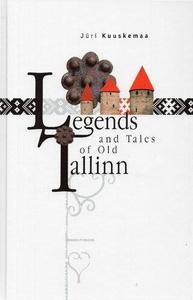
Free Download Legends and tales of old Tallinn By Jüri Kuuskemaa
2010 | 176 Pages | ISBN: 9949933439 | PDF | 107 MB
The book that reaches you in its English version cannot completely cover everything that time has preserved, whether in the form of legends, traditions or genuine historical documents. After all, Tallinn/Reval was since the times of the Vikings akin to a rich and beautiful bride with a large number of suitors, who wished to gain control over the strategic military and trade routes that pass through here and shape our mindsets to serve their interests. Thus, we had a wide range of foreign landlords - Danes, Germans, Swedes, Russians, all of whom were trying to shape our mindset according to their will. However, each foreign power has also left behind its own cultural heritage. Especially in the Middle Ages, when Tallinn/Reval was a part of the Hanseatic League (1285-1558) and became a prosperous port city and trade centre, rising to affluence due to being located on the London-Novgorod-Moscow trade route. The whole area inside the town walls was extensively filled with stone buildings already by the time of the Lutheran Reformation and the city had a total of 67 limestone defence towers for protection against foreign enemies.The Middle Ages were followed by less prosperous and increasingly war-filled centuries, when moderate poverty helped preserve the Gothic medieval core of the city and the main accents in city planning. Nevertheless, the Renaissance, Baroque, Classicism and subsequent architectural styles have left their traces upon the face of Tallinn. Although the Second World War destroyed one third of Tallinn's city centre, yet the historical Old Town was lucky compared to many other medieval cities. During the Nazi German occupation Stalin's Red Air Force destroyed only 11% of the Old Town in the spring of 1944. Some of the new post-war buildings that were constructed on the sites of the ruins do have a unique appearance. However, it is the heritage of the earlier centuries that still remains dominant in the Old Town.
